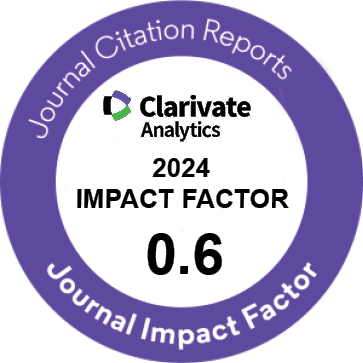| Original Article | |
| Comparison of GnRH Agonist, hCG, and Dual Trigger for Final Oocyte Maturation in IVF Cycle | |
| Ebtihal Alsahlani1, Nayereh Khadem2, Malihe Mahmoudinia2, Azadeh Khazaee3, Tahereh Sadeghi4, Mahbobeh Mahmoudinia2, Malihe Amiriam2 | |
| 1Master of Obstetrics and Gynecology, Basrah University, Iraq 2Supporting of the Family and the Youth of Population Research Core, Department of Obstetrics and Gynecology, Imam Reza Hospital, Faculty of Medicine, Mashhad University of Medical Sciences, Mashhad, Iran 3Royesh Infertility Center, Birjand University of Medical Sciences, Birjand, Iran 4Nursing and Midwifery Care Research Center, Clinical Research Development Unit of Akbar Hospital, Mashhad University of Medical Sciences,Mashhad , Iran |
|
|
IJWHR 2024; 12: 167-173 DOI: 10.15296/ijwhr.2024.6015 Viewed : 1379 times Downloaded : 61225 times. Keywords : In vitro fertilization, Human chorionic gonadotropin, Gonadotropin-releasing hormone agonist, Ovarian hyper-stimulation syndrome |
|
| Full Text(PDF) | Related Articles | |
| Abstract | |
Objectives: This study aims to analyze the effects of three types of triggers— human chorionic gonadotropin (hCG), GnRH-a, or a combination of them (dual)—on the quality of oocytes, embryos, and ovarian hyper-stimulation syndrome (OHSS) in the ICSI cycle. Materials and Methods: A prospective case-control study was conducted on 320 women referred to Milad IVF Center, Mashhad, Iran, between May 2016 and June 2019. All the participants underwent an antagonist protocol and were classified according to the trigger type into three groups: 118 patients in the GnRH-a group, 49 in the hCG group, and 153 in a dual group. The outcome measures included the number of metaphase I and metaphase II oocytes, germinal vesicle (GV) oocytes, high-quality embryos, and the rate of OHSS. Results: The three groups did not exhibit statistically significant differences concerning the quantities of retrieved oocytes: M II oocytes, M I oocytes, GV oocytes, and embryos. The dual trigger method resulted in significantly higher embryo quality (P = 0.017). In comparison to dual and GnRH-a group triggers, it was observed that women administered with the hCG group trigger displayed an increased occurrence of OHSS, and the number of severe OHSS in the dual trigger was higher than in the GnRH-a and hCG groups. Conclusions: The GnRH agonist alone and the dual trigger can be as effective as the hCG trigger. A GnRH agonist is preferable in high-risk patients. Therefore, it is imperative to administer the treatment based on the patient’s status. |
Cite By, Google Scholar
Google Scholar
PubMed
Online Submission System
 IJWHR ENDNOTE ® Style
IJWHR ENDNOTE ® Style
 Tutorials
Tutorials
 Publication Charge
Women's Reproductive Health Research Center
About Journal
Publication Charge
Women's Reproductive Health Research Center
About Journal
Aras Part Medical International Press Editor-in-Chief
Arash Khaki
Mertihan Kurdoglu Deputy Editor
Zafer Akan























